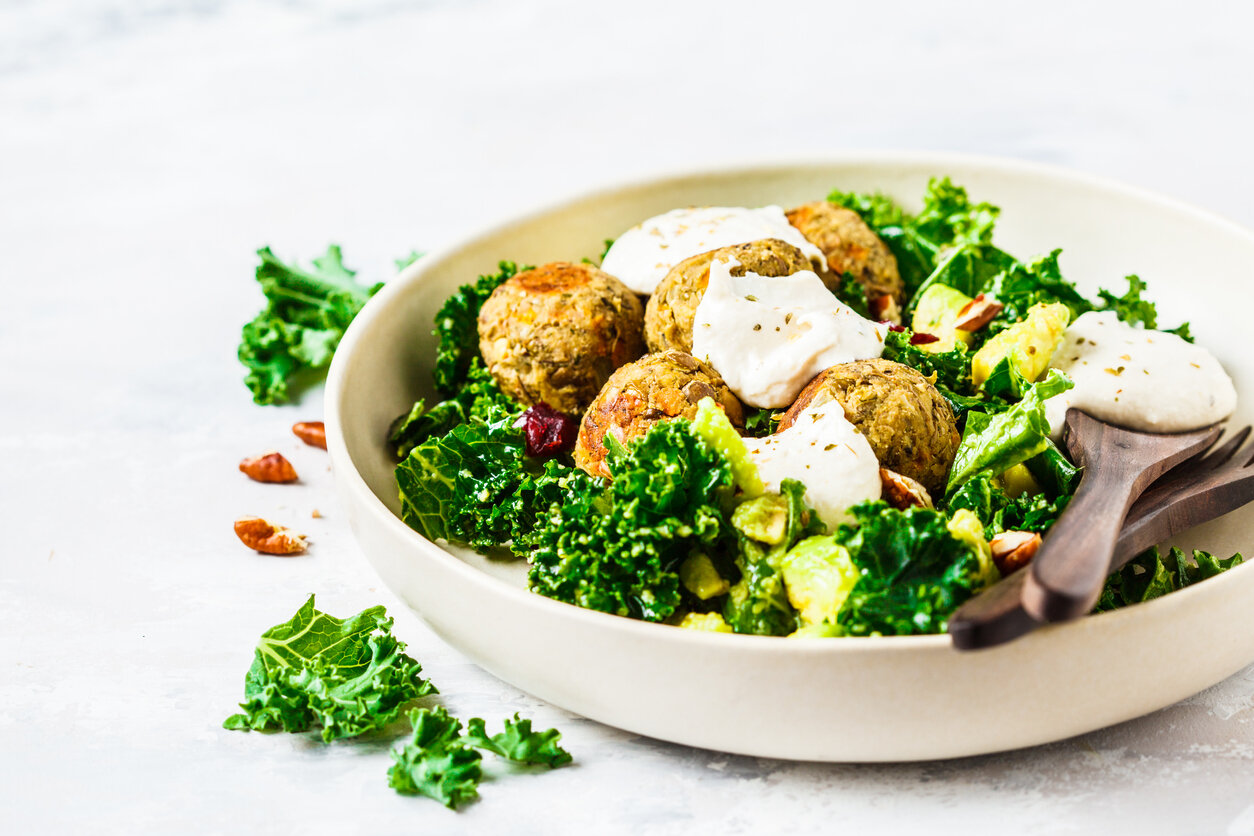Tips to getting started eating vegetarian:
Have the whole family eat meatless at least one or two times per week. This is great even for families without a vegetarian in the house!
When you are making meals with meat or seafood, consider just making a simple protein-rich alternate for the vegetarian - such as, tofu or tempeh sauteed with a drizzle of barbecue sauce or a sandwich with hummus and sliced veggies.
Always have a stock pile of beans on hand. In one cup of beans there is about 220 calories, 17 grams of fiber, and 14 grams of protein. They are a great protein go-to, serve a cup of beans topped with a drizzle of olive oil, vinegar, and spices at meals.
When throwing a party have a vegetarian option available like: grilled marinated tofu cubes, grilled vegetables, veggie burgers, roasted vegetables, grilled cheese sandwiches, and/or hummus and vegetables.
At restaurants ask to customize a dish to make it vegetarian, for example order a grilled chicken salad without the chicken and ask for more of the vegetable toppings to be included on the salad instead.
Stock up on prepare easy to grab vegetarian foods like: hummus, 3-bean salad, Greek yogurt or Icelandic yogurt (more protein than traditional yogurt), hard-boiled eggs, guacamole, cottage cheese, peanut butter, almond butter, trail mix, nuts, seeds, dry roasted edamame or other dry roasted beans, etc.
Watch outs, When to Call-in Professional Support, and Supplements
One of the biggest watch outs for vegetarians is to make certain to include a wide variety of plant-based protein foods (e.g. nuts, seeds, peanut butter beans, tofu, tempeh, edamame, meat substitutes, hummus, etc.). If you or your child won’t eat plant-based protein foods than eating vegetarian may not be the best choice for them. As mentioned above, a well-planned vegetarian eating pattern is appropriate for any age but if you eat vegetarian or vegan and just fill up on foods like chips, French fries, and bread, you certainly will be missing out on nutrients the body needs.
Sometimes professional support is helpful, especially if vegetarian eating is unfamiliar to you. Working with a registered dietitian can help guide you and your child through the transition to vegetarian eating. Also discussing the eating change with your child’s pediatrician and any concerns that they may have or blood work that they would like to monitor to ensure your child’s needs are being met.
Lastly those following a vegan diet require vitamin B-12 supplementation because it is primarily found in animal foods. Although, vegetarians how are routinely consuming dairy foods will not likely require supplementation.
You Can Do It
Check out the recipe ideas in the blog gallery on this site, many of which are vegetarian/vegan or that can be easily adapted to be vegetarian and check out the resources listed below. Enjoy the adventure of trying, tasting, and preparing delicious vegetarian foods - you can do it!
Resources:
Meatless Monday Recipes: http://www.meatlessmonday.com/favorite-recipes/
Vegetarian Dietetic Practice Group – Consumer Web site: www. vegetariannutrition.net
Feeding Vegetarian Teenagers - https://vegetariannutrition.net/docs/Teens-Vegetarian-Nutrition.pdf
Vegetarian Resource Group - www.vrg.org
References:
Academy of Nutrition and Dietetics Vegetarian Diet Position Paper: http://www.eatrightpro.org/~/media/eatrightpro%20files/practice/position%20and%20practice%20papers/position%20papers/vegetarian-diet.ashx
Mekonnen, M.M. and Hoekstra, A.Y. (2010) The green, blue and grey water footprint of farm animals and animal products, Value of Water Research Report Series No. 48, UNESCO-IHE, Delft, the Netherlands.








